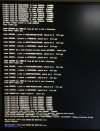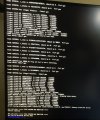bottletop
Active Member
If I were in your position, I'd disconnect power to the usual hard drive(s) in the PC and connect the Humax drive in it's place.The box has two disks already in it and a DVD drive. I connected the Hummy HDD (SATA) using the DVD drive's data cable and powered it through an available power connector. The BIOS sees all three HDDs when I enter the booting process but the system now fails to boot from the System Rescue disk (it loops back to the BIOS or hangs). Should I (re)move the jumper from the Hummy drive, or remove the DVD drive power connector, is any of that relevant?
DVD drive is optional. This way I will minimise the chance of corrupting the normal PC drives.
What is the jumper for on the Humax drive? (I don't use jumpers on my drive for the HDR.)
Last edited:


 I am not too worried about running the commands, the filesystems identify themselves quite clearly as linux.
I am not too worried about running the commands, the filesystems identify themselves quite clearly as linux. 


 .
.